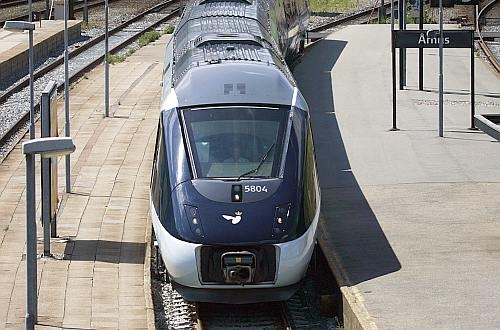The trains, which were ordered 13 years ago, were withdrawn last November following two separate incidents of signals being passed at danger. Prior to this 18 sets had been certified for revenue operation, covering nine daily diagrams.
Numerous tests have been carried out during the last seven months, with experts from many companies and institutes participating. Trafikstyrelsen has specified that dynamic brakes, which were not operational when the incidents occurred, must now be used.
DSB has been testing the trains without passengers since February, and has taken advantage of the hiatus to upgrade 37 sets already delivered to Denmark, which are now ready for service.
Initially they will enter service on the Esbjerg – Aarhus replacing MR dmus build between 1978 and 1985, although they will later return to the Copenhagen – Aarhus – Aalborg inter-city services for which they were originally conceived.
However, the future of the IC2 and IC4 fleets is still far from certain. The revised delivery specified in the so-called "ultimatum agreement" has slipped seriously, and is now 15 sets behind schedule.
Perhaps more ominously for AnsaldoBreda, a public transport plan unveiled by the government last month includes funding for 15 inter-city emus for the Copenhagen – Fredericia – Esbjerg route, which was originally destined for IC4 operation but will now be electrified instead. This will allow refurbished IC3 trains to be redeployed on regional services and strengthening inter-city services to northern Jutland. The plan also allocates funding for 55 double-deck coaches for regional services in Zealand, which together with further electrification in eastern Denmark will further reduce the requirement for IC2s and IC4s.

